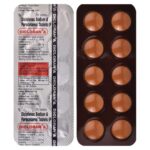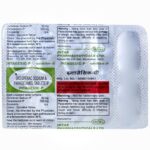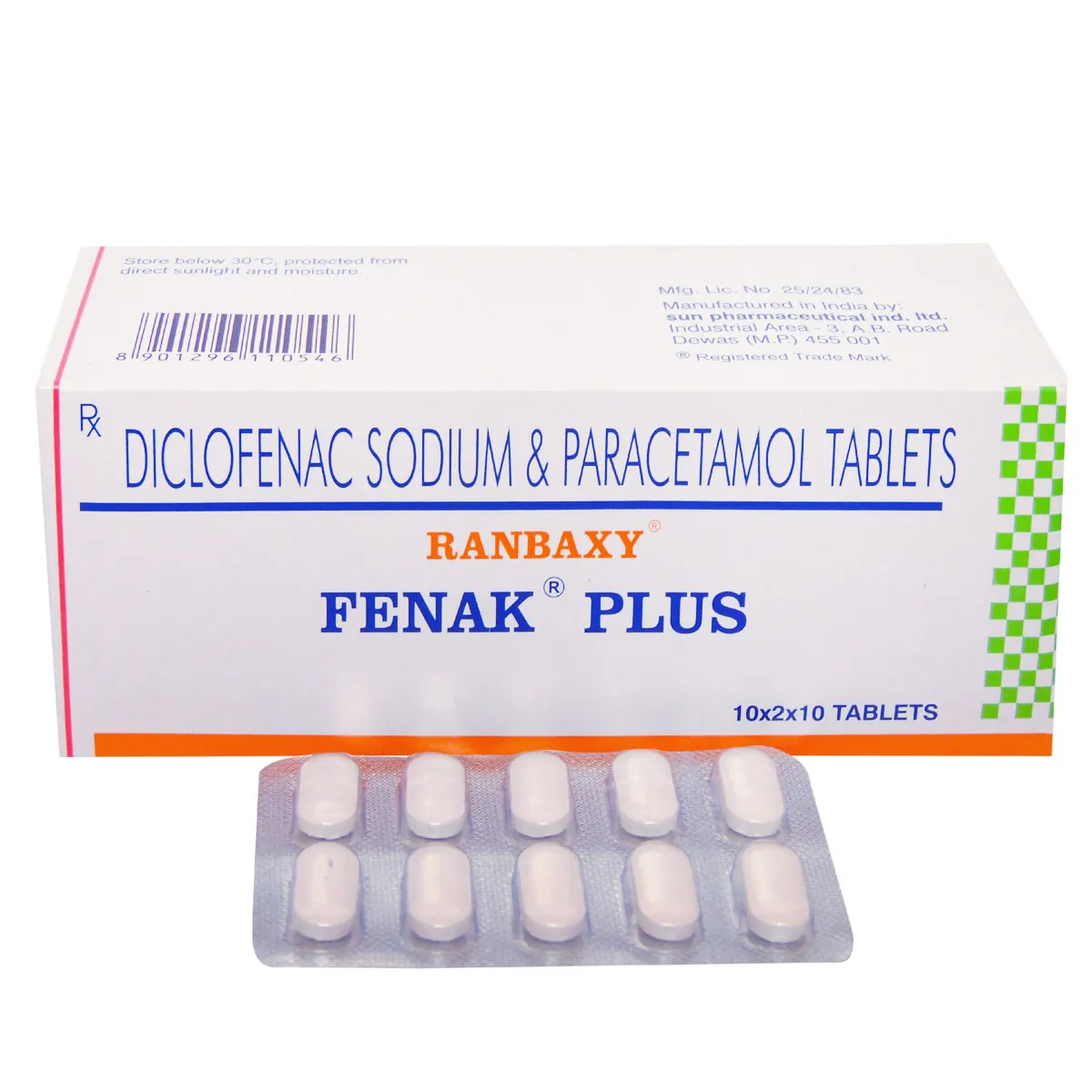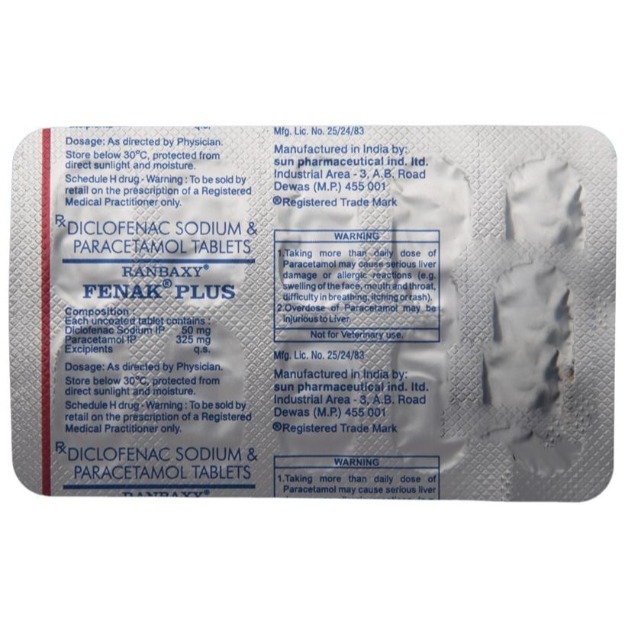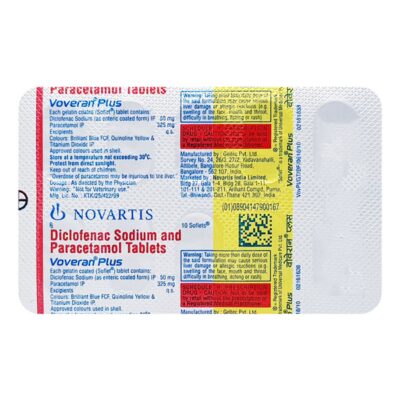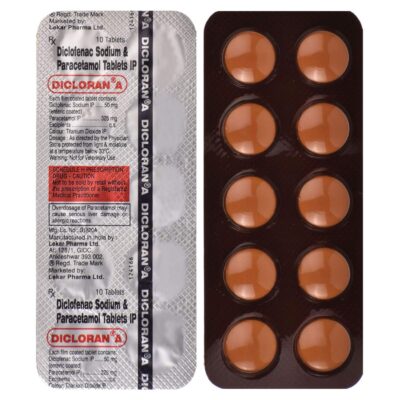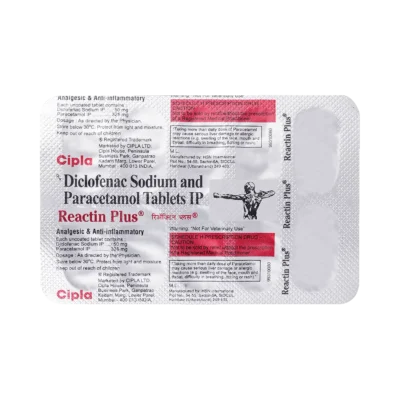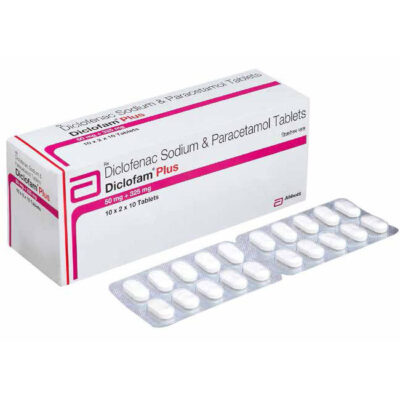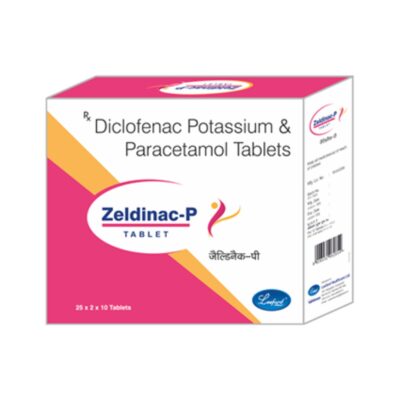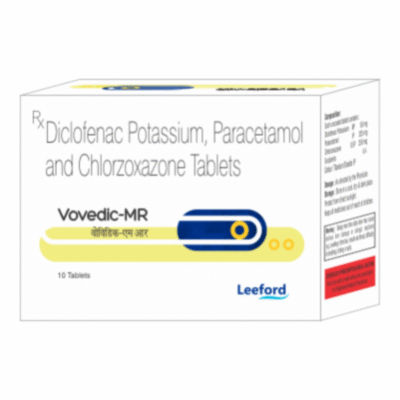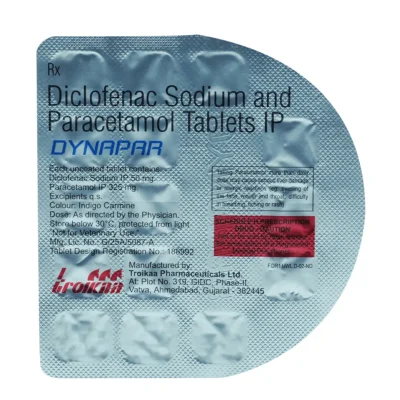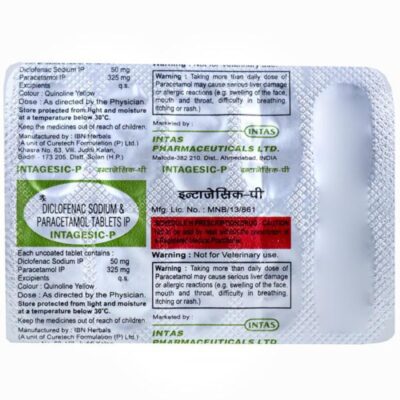Description
💊 Overview
This tablet is a dual-action painkiller that combines the anti-inflammatory effects of diclofenac with the pain-relieving and fever-reducing properties of paracetamol. It is commonly prescribed for musculoskeletal pain, dental pain, joint inflammation, and fever with pain.
🧪 Ingredients & Mechanism of Action
-
Diclofenac Sodium (50 mg) – A non-steroidal anti-inflammatory drug (NSAID) that reduces inflammation, swelling, and pain by inhibiting cyclooxygenase (COX) enzymes, thereby reducing prostaglandin synthesis.
-
Paracetamol (325 mg) – An analgesic and antipyretic that raises the pain threshold and reduces fever by acting on the hypothalamic heat-regulating center.
Combined Action:
This combination provides faster and more effective pain relief with reduced gastrointestinal side effects compared to diclofenac alone.
✅ Indications / Uses
-
Headache, migraine
-
Dental pain and post-dental surgery pain
-
Joint pain: osteoarthritis, rheumatoid arthritis
-
Muscular pain, sprains, and strains
-
Menstrual cramps
-
Back pain, sciatica
-
Fever with body aches
📋 How to Use
-
Typical Dose: 1 tablet two to three times daily, after food.
-
Route: Oral, with a full glass of water.
-
Duration: Use for short-term relief unless advised otherwise.
-
Do not exceed the maximum daily dose of paracetamol (4,000 mg/day) or diclofenac.
⚠️ Common Side Effects
-
Gastric discomfort or acidity
-
Nausea or vomiting
-
Headache
-
Dizziness
-
Drowsiness
-
Indigestion or bloating
These side effects are generally mild and short-lived.
🚨 Serious Side Effects (Seek Immediate Help)
-
Gastrointestinal bleeding (black stools, vomiting blood)
-
Liver damage (yellowing of eyes/skin, dark urine, fatigue)
-
Allergic reaction (rash, itching, swelling, difficulty breathing)
-
Kidney dysfunction (reduced urine output, swelling in legs)
-
Severe abdominal pain or persistent nausea
-
High blood pressure or cardiac symptoms (rare, but possible with long-term use)
🔍 Monitoring & Follow-Up
-
Liver Function Tests (LFTs): Recommended if used regularly
-
Renal Function Tests (KFTs): In elderly or long-term users
-
Blood Pressure Monitoring: If used long term, especially in hypertensive patients
-
GI Monitoring: Watch for signs of ulcers or bleeding
⚠️ Warnings & Precautions
-
Liver Disease: Use with caution; paracetamol is hepatotoxic in overdose
-
Kidney Impairment: NSAIDs can worsen renal function
-
Stomach Ulcers or GI Bleeding: Avoid or use under strict supervision
-
Pregnancy & Breastfeeding: Avoid in late pregnancy; use only under medical advice
-
Alcohol Use: Increases risk of liver damage — avoid
-
Elderly Patients: Increased risk of GI and kidney side effects
-
Drug Interactions: Avoid using with other NSAIDs, blood thinners, or other paracetamol-containing medications
📝 Summary
The Diclofenac 50mg + Paracetamol 325mg tablet is a widely used, fast-acting, and effective treatment for mild to moderate pain and inflammation. It offers the benefits of reduced swelling, relief from pain, and control of fever in a single dose. However, due to potential liver, kidney, and gastrointestinal risks, it should be used for short-term relief under medical supervision. Regular monitoring is essential for safe long-term use.
Consult your doctor before use and never self-medicate.
Note: This information is intended for educational purposes and should not replace professional medical advice. Always consult a healthcare provider for personalized guidance.
